Introduction
Nature took special care of the bee world. In the hive, each insect performs its task, which was set before it by Mother Nature. Both worker bees and drones perform the function necessary for family life. At the head is the queen bee, the queen.
As the only sexually mature female in a bee society, the queen is not only unique in appearance, she is vital to the survival of that society.
Just as it befits a real queen, the queen bee has 24 hours a day workers which constantly take care of her. These workers spend most of their time feeding, cleaning, and even digesting food for their queen. Without such care, the queen would quickly die.
What Is a Queen Bee?
Bees can live together only in the community, in clusters and genera. In one genus of bees, we find the queen and a large number of worker bees, and in the summer several hundred drones.
The best answer to the question of what a queen is – “The mother queen of all bees”. The queen keeps the community together and is the only real female in the hive. Only the queen can lay eggs, from which other queens, worker bees and drones develop.
The queen can live 5 years. The first and second years are the most fertile. It comes out of the hive for only two reasons: when it mates and with a swarm. on the fourth or fifth day after birth, it hatches for fertilization, if bad weather does not prevent it.
Bees breed a new queen for three reasons: in natural swarming – swarming queen, in case of loss of queen in the hive – forced queen and in case of change of poor-quality queen – queen of silent shift.
What Does a Queen Bee Look Like?
The queen is quite easy to recognize because she usually has a larger and oblong hind part of the body and short narrow wings, which cover only half the back of the body. But the length depends on whether the queen lays eggs actively or is in the dormant phase and whether she is fertilized or not. The length of the queen bee body is from 18 to 20 mm.
The hind legs of queens are longer and larger than those of workers, but they do not have pollen baskets because they never do that in their lives.
Also, queens have a stinger, but typically use it for their own conflicts within the hive.
In the first years, it is yellowish, and later darker in color. It develops from the same egg as the worker bees, but only if the bees build a special larger cell for it, i.e., a queen bee cell.
The queen can lay up to 2,000 eggs in one day, each individually weighing more than she does.
Worker bees are hatched from the fertilized eggs, while drones hatch from the unfertilized.
In order for the queen to perform its function, it must be fertilized. After 5-10 days of hatching, she goes on a mating flight to the area where sexually mature drones are attracted by the secretion of her pheromones and mates with them, returns to the hive, begins laying eggs and no longer comes out of the hive.
How To Find a Queen Bee?
The queen bee cell is usually located in the lower part of the honeycomb and is much larger than other cells. It is turned down, while all the cells of the worker bees and drones are in a flat position.
How to find a queen if it is known that the queen likes to hide, so it is sometimes difficult for a long-term beekeeper to find her?
The queen should be looked for on the frames, where the brood is open, where the eggs have just been laid. If we added a frame with built-in honeycomb the day before, we would find the queen on it first.
The more we make smoke, the harder it will be to find the queen. If we don’t smoke at all, we’ll find it in the easiest way. We need to keep each extracted frame above the opening of the hive, because it happens that the queen slips off the honeycomb, falls into the grass, so we can easily lose it.
We will usually find the queen in the middle of the brood by noon, and in the afternoon at the end of the brood. It depends on the heat, i.e., the cold of the day.
Of course, if it is marked, it is easiest to notice.
Bright spots allow you to quickly find a female among the workers. And if you have a large apiary, they make it easier to control the age of the bees. Marking is not a very laborious process, and it greatly simplifies life for the beekeeper in the future.
How To Identify Queen Bee?
A fertile female differs from ordinary bees in belly length and breast width. It also has differences in color, but this difference is so small that it is difficult to recognize at first glance. The queen is constantly moving towards a secluded place and trying to hide, so you need to be very fast in finding the queen.
Workers cover the queen. Therefore, you need to look for it where there’s the biggest concentration of bees. The female’s abdomen often protrudes beneath the clusters of worker bee bodies.
Another option, which is also striking: a large and shiny spot on the breasts. The dorsum of the female is smooth and black, because it is not covered with hairs, as in the worker bee. This difference is clearly visible against the general background of “fluffy” insects. The queen is too big for the bees to hide completely. I read somewhere that the belly or the breast will surely “betray” the queen.
Catching The Queen
If we are still not experienced enough, the queen should not be grabbed by hand. If we still consider ourselves skilled enough to catch the queen, we must make sure that our hands are clean, so free from any odor. If the queen gets a smell by the touch of the beekeeper’s hand, and returns to society with that smell, it can happen that the other bees kill her.
It is important to know how to catch the queen. The queen should be grabbed by the chest or wings, but never by the abdomen. It is best to use a cage. When we catch the queen, we should be careful not to make it squeak by careless catching, because bees could attack the beekeeper.
How Long Does a Queen Bee Live?
The queen develops the fastest thanks to a rich diet. It is also the largest bee in the colony, about twice the size of a worker bee. Drones are slightly larger than workers, but never compared to the queen.
This bee does not work, it only gives offspring. All members of the bee family take care of the queen, protect her, feed her. All queen food is royal jelly, the most valuable product rich in nutrients and proteins.
Good conditions and a strong family allow the queen to live up to 5 years. If the queen lays eggs more intensively, then she will wear out faster, and her life will not exceed 2-3 years.
If the bee colony is left without a queen, the bees start extracting queen bee cells due to the lack of pheromones. These are specific cells that bees begin to build over one-day-old or slightly older laid eggs, i.e., larvae.
Depending on the strength and characteristics of the colony, there may be from several to twenty, or even more queen bee cells in a colony without a queen. After 16 days, the young queen emerges from the queen bee cell and the first thing she does is demolish and destroy all the other queen bee cells and queens. There is only one left.
After seven days of test flights, she goes out to mate during a beautiful and sunny day. On that occasion, it can be several kilometers away from the hive. After fertilization, it returns to the hive and does not leave it except during swarming.
A couple of days later, it is possible to notice the first eggs laid in the worker cells if everything went well. If the queen does not return from fertilization, the colony is doomed, since there are no more one-day-old eggs from which it is possible to grow a new queen.
END
In the end, I will share a statement of one of the world-renowned experts in beekeeping, professor and doctor Jovan Kulinčević, originally from Belgrade, who says: “The success or failure of a bee colony during the production season largely depends on the queen. This interdependence is so narrow that all other factors, no matter how optimal, will not help much if the queen bee is deficient.”

